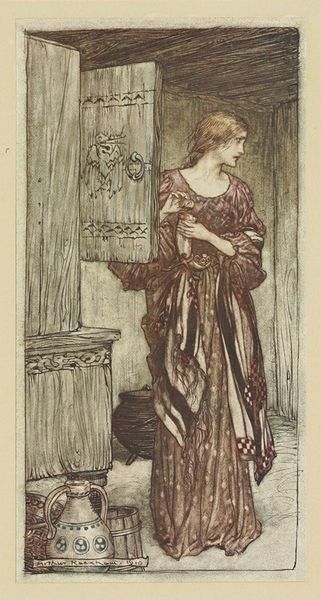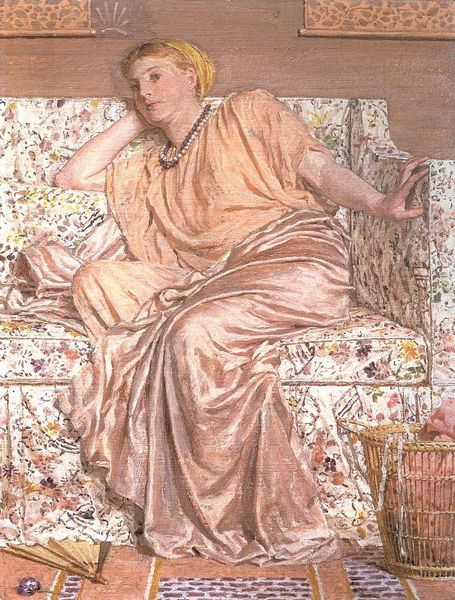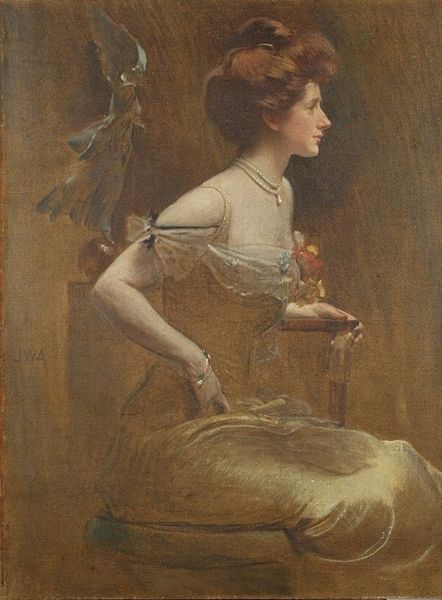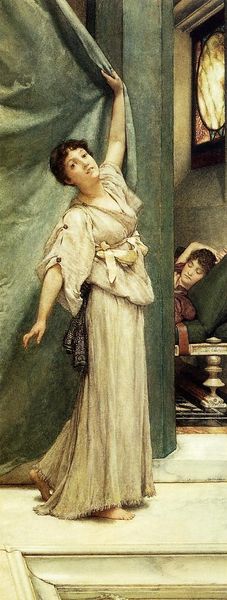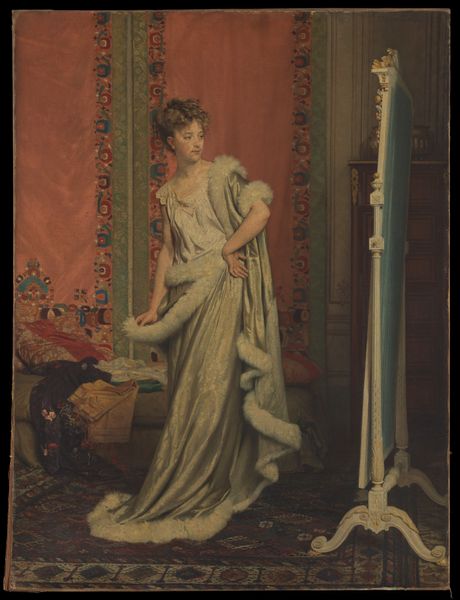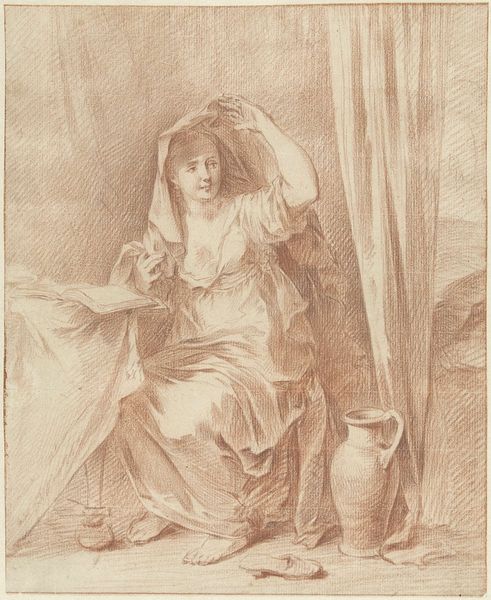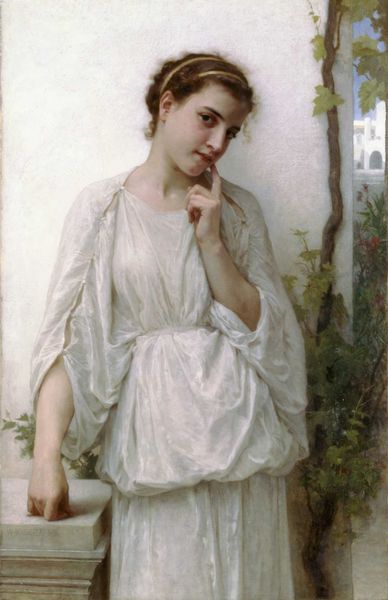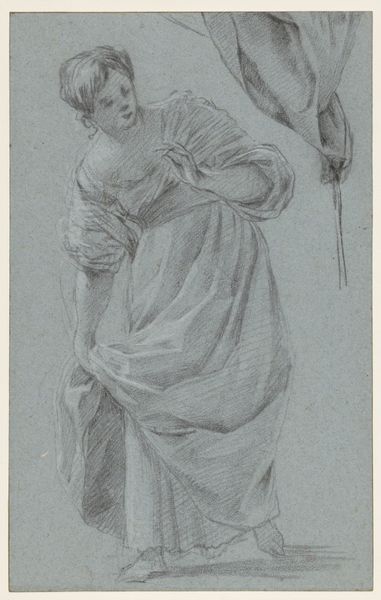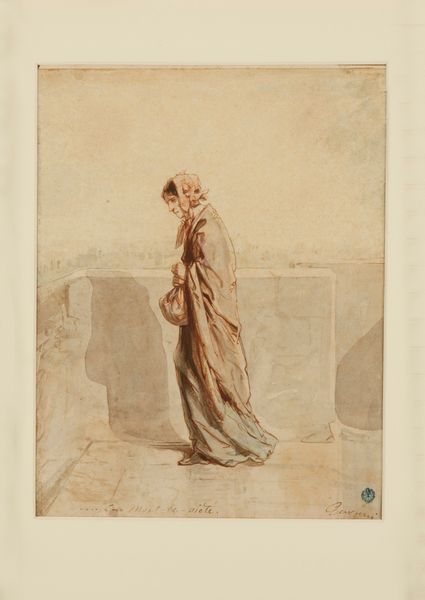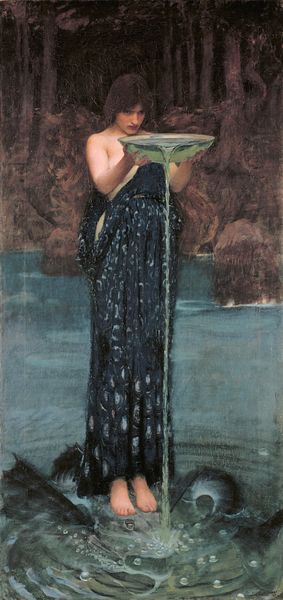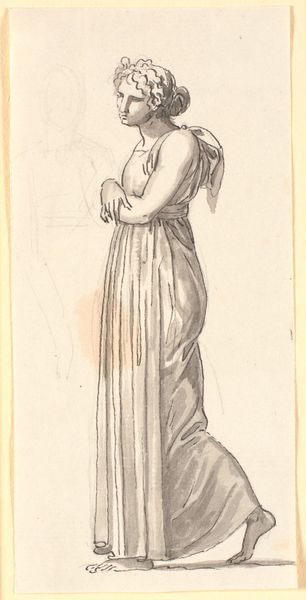
drawing, painting, watercolor
#
portrait
#
drawing
#
painting
#
oil painting
#
watercolor
#
intimism
#
classicism
#
genre-painting
#
pre-raphaelites
#
academic-art
#
watercolor
#
realism
Dimensions: 26 1/8 x 10 1/4 in. (66.3 x 26 cm) (sheet)37 1/16 × 21 1/16 × 3 1/2 in. (94.14 × 53.5 × 8.89 cm) (outer frame)
Copyright: Public Domain
Curator: Here we have Lawrence Alma-Tadema’s "Midday Slumbers," completed in 1888 and currently residing here at the Minneapolis Institute of Art. What's your immediate response to it? Editor: There's a wonderful stillness to this piece, a quietness that envelops you. It’s airy and yet grounded at the same time. Is it an oil painting or a watercolor? The texture is deceptively smooth. Curator: Alma-Tadema used both oil and watercolor, layered meticulously, a hallmark of his precise academic style and engagement with realism. This layering allows for a complexity of detail that evokes the intimacy, bordering on voyeurism, of a domestic scene. Think of it in conversation with representations of women during the Pre-Raphaelite movement; do you see similar ideological patterns at play here? Editor: Absolutely, the woman in the foreground, seemingly caught in the act of lifting a curtain, feels staged, perhaps objectified even in her near undress. This all seems deliberate when considered alongside the historical reception of Alma-Tadema as one of the leading classicists of the Victorian era. Did these portrayals bolster certain ideals regarding the visibility of women at this time? Curator: In many ways they did, solidifying social and gendered power structures through their aesthetics and accessibility. The contrast with the sleeping figure, shielded from the day's intensity, highlights the precarious positions occupied by women. How are we reading this contrast? One seeking respite from the expectations of her time, one tasked with facilitating that comfort? Or is there more interplay? Editor: The draped cloth introduces ideas of accessibility and visibility, but also points to control and, perhaps, concealment, raising vital questions about whose experiences matter, which women are worth watching, and from which angles? But I wonder what social factors enabled the making of "intimate" works of art such as this. Curator: Alma-Tadema catered to the burgeoning market for domestic scenes reflecting middle and upper class life, providing a visual language for these experiences that bolstered the social order, especially for these burgeoning consumer and art collecting classes in the west. Editor: It really forces us to confront who dictates those visual languages, whose gaze truly holds power. "Midday Slumbers" provides a fascinating portal to address larger conversations. Curator: Agreed. This is a fantastic example of the artist offering a vision into what that class structure idealizes.
Comments
minneapolisinstituteofart about 2 years ago
⋮
Lawrence Alma-Tadema achieved spectacular success in England producing dreamy, mildly erotic paintings of languorous Victorian beauties in gorgeously appointed antique spaces—Roman baths and markets, colonnaded Grecian terraces, Egyptian houses. His house in London was almost as renowned as his paintings. Reports describe classically inspired architecture, ornament, and mosaics, all designed by the artist himself. Paintings and house alike were informed by a deep knowledge of and fervent fascination with antiquity. Alma-Tadema’s compositions present distant worlds with startling immediacy. Strong vertical elements here tightly crop the space, giving the viewer a sense of privileged intimacy in this glimpse of a woman indulging in a midday nap in a private back room of a house. An excellent colorist, Alma-Tadema was adept at representing the subtle effects of light and shadow in watercolor. Note, for instance, how the warm, diffuse afternoon light coming through the onyx windowpane contrasts with the dark shadows on the cold marble floor.
Join the conversation
Join millions of artists and users on Artera today and experience the ultimate creative platform.

